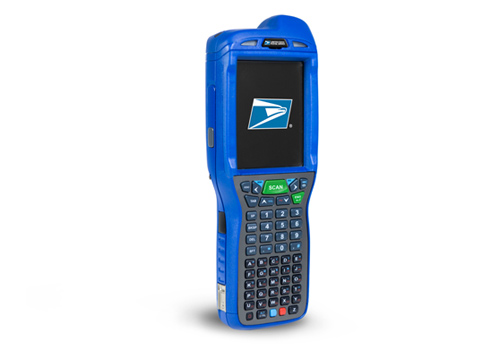
USPS to deploy 75,000 next-generation package scan devices

The US Postal Service has invested in new scanning technology to improve track and trace capabilities in its package business. The world’s largest postal service has invested in new handheld electronic scanners provided by supplier Honeywell.
The devices, called Mobile Delivery Devices by USPS, will use multiple mobile communications networks in order to provide real-time tracking for packages, as part of efforts to compete against the end-to-end tracking capabilities of package business rivals like FedEx and UPS in winning a larger share of the booming e-commerce delivery market.
The new units can also access local USPS internal wired and wireless communications networks to transmit collected data, and provide mobile communications links to local delivery offices.
About 75,000 of the next-generation devices are expected to be distributed to city and rural mail carriers by the Postal Service from August to December this year.
The initial deployment is expected to take place mainly in major metropolitan areas, including locations where USPS is expanding its package services with Sunday deliveries. A second phase deploying an additional 75,000 devices is expected to take place in 2015.
The Postal Service said the technology can support both current real-time scanning needs for its postal products and services, and also future scanning requirements, with new functionality provided through software updates.
The Honeywell technology is replacing two devices used by letter carriers, the Intelligent Mail Device scanner that has been in use for the last eight years, and the cell phones used by letter carriers to transmit scan data.
The devices can also be used by USPS centrally to track the whereabouts of their delivery staff and record working time.
Honeywell
Honeywell’s Scanning & Mobility division won the contract to provide the new Mobile Delivery Devices after field testing of various devices from different potential suppliers over the last year in locations including the Washington DC area, Minneapolis and Texas.
Expectations are that the new technology will mean mail carriers do not have to manually input data as often because of barcode scan failures, improving operational efficiency.
Speaking to reporters at this week’s National Postal Forum just outside Washington DC, US Postal Service chief information officer Jim Cochrane described the major IT upgrade associated with the new scanning systems and the massive amount of data it will involve as a “billion dollar bet on the future of the shipping business”.
The US Postal Service has been building up its scanning capabilities over the past few years, using its Intelligent Mail barcode (IMb) system, or for packages the Intelligent Mail package barcode (IMpb) system.
- Honeywell Scanning & Mobility
As of this year, USPS has started requiring business mailers to use IMpb barcodes on every package in order to access commercial parcel service pricing.
IMpb barcodes include delivery address information, but also mailer identification information, payment information and details of extra services requested.













